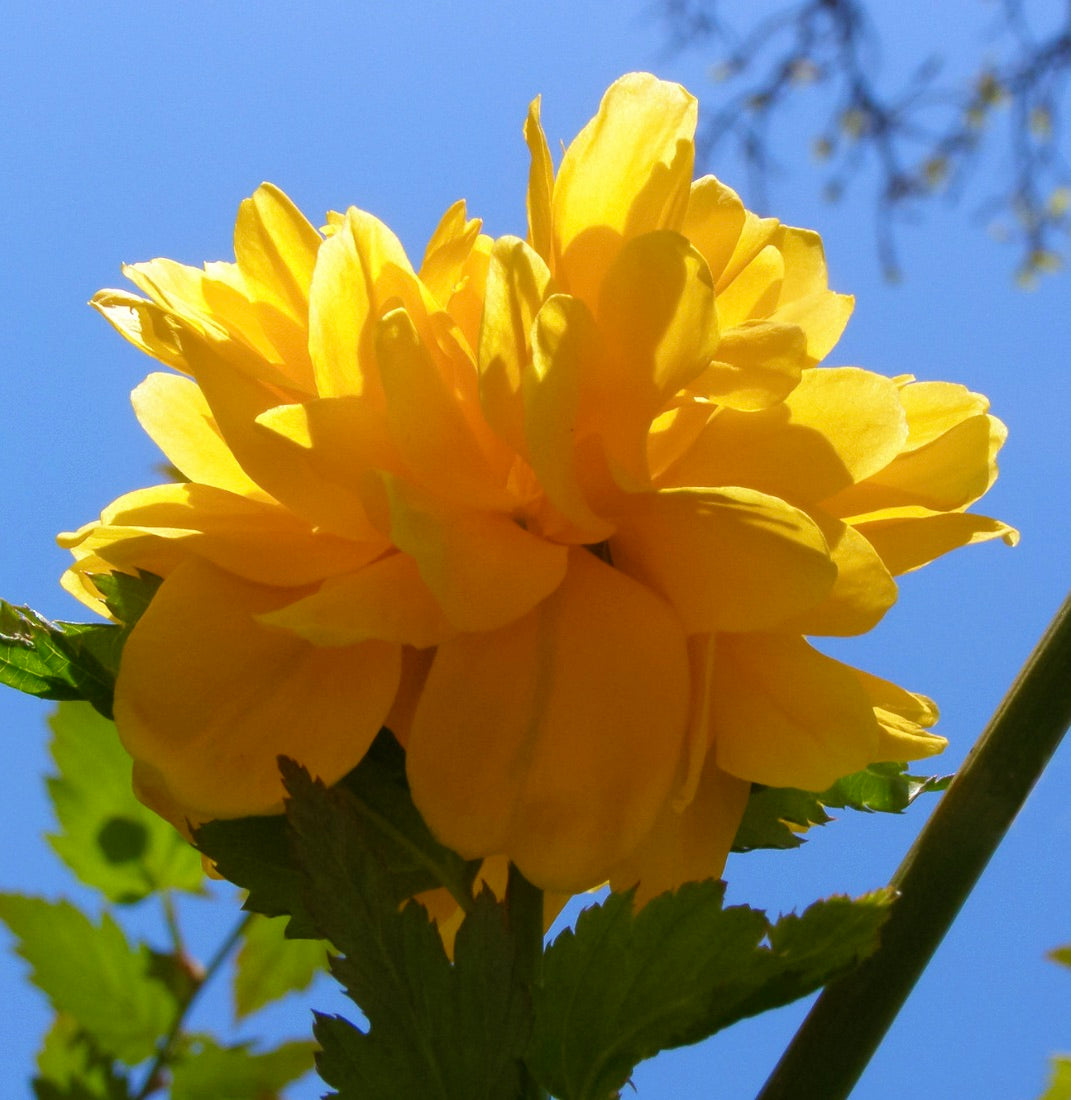- Catalogue Plants
Kerria japonica cv "pleniflora"
Kerria japonica cv "pleniflora"
Couldn't load pickup availability
Plant Description
Kerria japonica cv. "Pleniflora," commonly known as the Double-Flowered Japanese Kerria or Pleniflora Japanese Rose, is a deciduous shrub appreciated for its vibrant, double-petaled yellow flowers and arching growth habit. This cultivar of Kerria japonica, a member of the Rosaceae family, is native to China, Japan, and Korea. "Pleniflora" is celebrated for its ability to brighten up the garden in early spring with its profuse and cheerful blossoms. The shrub typically reaches a height of 1 to 2 meters (3 to 6 feet) and features slender, cane-like stems covered with bright green, toothed leaves. The double flowers of "Pleniflora" resemble small, pom-pom-like blooms, and they appear from late winter to early spring, creating a burst of color when many other plants are still dormant. This cultivar is known for its resilience and adaptability to various growing conditions, making it a popular choice for both novice and experienced gardeners.
Cultivation:
-
Climate: "Pleniflora" Japanese Kerria is well-suited to temperate climates. It is hardy in USDA zones 4-9.
-
Sunlight: Plant your Kerria japonica cv. "Pleniflora" in a location that receives partial shade to full shade. While it can tolerate some sun, it prefers protection from the hot afternoon sun in warmer regions.
-
Soil: Provide well-draining, loamy soil with good fertility. This shrub is adaptable to various soil types, but it thrives in slightly acidic to neutral soil with a pH range of 6.0 to 7.5.
-
Watering: Water your plant regularly, particularly during dry spells and the growing season. Keep the soil consistently moist but not waterlogged.
-
Mulching: Apply a layer of organic mulch around the base of the shrub to retain soil moisture, regulate soil temperature, and suppress weeds. Avoid mulch contact with the stems.
-
Fertilization: "Pleniflora" Japanese Kerria benefits from regular fertilization with a balanced, slow-release fertilizer. Apply fertilizer in the spring to provide essential nutrients for flowering.
-
Pruning: Prune your Kerria japonica cv. "Pleniflora" after flowering to shape it, remove dead or crowded branches, and encourage bushier growth. Pruning is generally minimal for this shrub.
-
Pests and Diseases: This cultivar is relatively resistant to pests and diseases. However, watch for issues like aphids or powdery mildew, and address them if they appear.
-
Spacing: When planting multiple "Pleniflora" Japanese Kerria shrubs, space them at least 1-2 meters (3-6 feet) apart to allow for their mature size and to create a visually pleasing arrangement.
-
Propagation: You can propagate Kerria japonica cv. "Pleniflora" through softwood cuttings taken in late spring or early summer. Plant the cuttings in well-draining soil or a suitable rooting medium.
Kerria japonica cv. "Pleniflora," the Double-Flowered Japanese Kerria, is a delightful and adaptable shrub that can bring early spring cheer to your garden with its profusion of double yellow blossoms. Its low-maintenance nature and ability to thrive in partial shade make it a valuable choice for gardens, shaded borders, or woodland settings. With proper care and attention to its specific requirements, it can flourish and become a vibrant addition to your outdoor space.
IMPORTANT: Picture show flower of adult plant NOT for sale, the offer is for a plant in the dimension indicated in description.
Botanical family: Rosaceae
Botanical genus: Kerria
Botanical species: Kerria japonica
SKU:BA-0758-S-2
Cultivation
Cultivation
Info and Disclaimers
Info and Disclaimers
Plant Height:
Plant Diameter:
Pot Size:
Grafted/Not Grafted:
Disclaimer: Be aware that most plants change across seasons. If present foliage, could have been fallen or change in its color.


